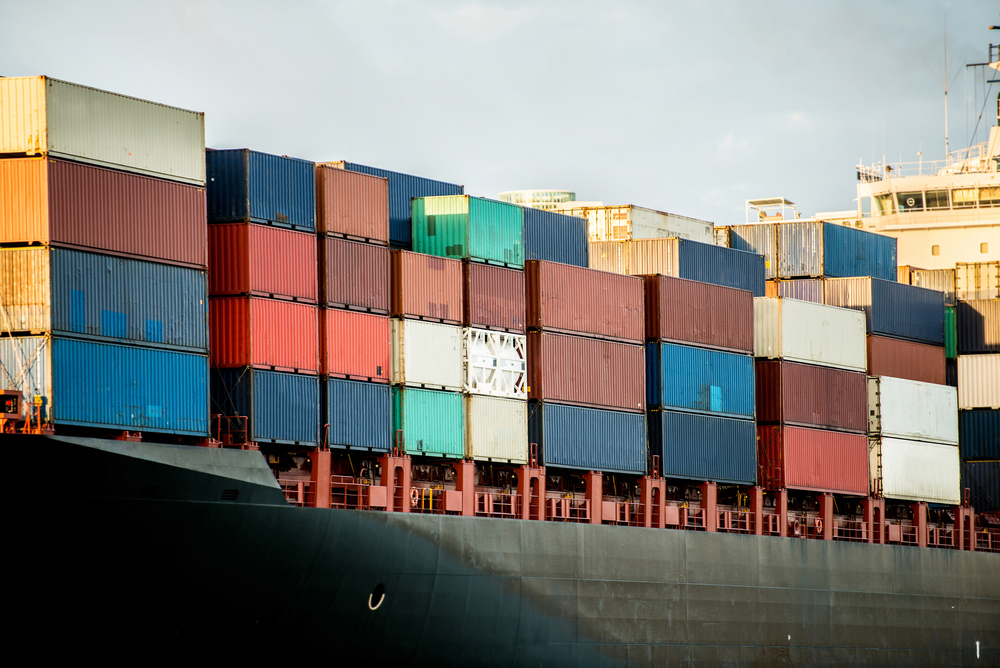Revolutionary ship design: historical failures and future aspirations
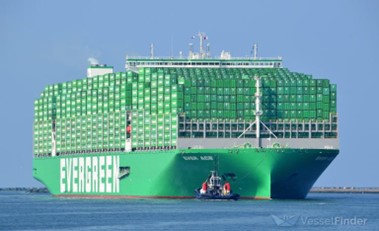 Picture the Ever Ace -- the largest container ship in the world, carrying 21,710 20-foot containers on her 1320-foot-long by 203-foot-wide deck -- sailing on her maiden voyage from Yantian port into the South China Sea in August of last year.
Picture the Ever Ace -- the largest container ship in the world, carrying 21,710 20-foot containers on her 1320-foot-long by 203-foot-wide deck -- sailing on her maiden voyage from Yantian port into the South China Sea in August of last year.
She is not alone on the seas. Dozens of other similarly sized behemoths cruise the waters while many more are currently under construction. Just two of them stacked vertically would be nearly as tall as the world's tallest building, the Burj Khalifa in Dubai.
Whether you’re wrapped up in the world of shipping and logistics or not, that’s impressive.
There are around 5,500 container ships globally, and together they carry 25 million TEUs, the rough equivalent to 25 million 20-foot containers. Interestingly, all of the largest of these ships have similar dimensions – 1,320 ft long and about 200 ft wide. Why have they hit this upper limit?
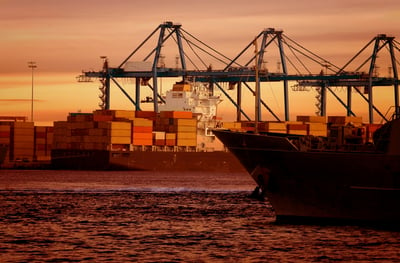 There are several reasons why vessels can't get any bigger than these already colossal giants. The foremost among these are the ports, which can’t manage larger ships. Cranes can only reach so far across the vessels to load and unload containers. Also, big ships sit so deep in the water that they risk running aground. The only way to accommodate bigger ships is with a substantial overhaul of today’s port infrastructure.
There are several reasons why vessels can't get any bigger than these already colossal giants. The foremost among these are the ports, which can’t manage larger ships. Cranes can only reach so far across the vessels to load and unload containers. Also, big ships sit so deep in the water that they risk running aground. The only way to accommodate bigger ships is with a substantial overhaul of today’s port infrastructure.
Another restriction is maneuverability. Ships must be able to turn as well as pass through locks and canals, like the Suez and Panama canals, which have size restrictions. In addition, heavy weather conditions limit where big ships can sail because their size and weight make them more vulnerable than smaller, lighter and more steerable ships. Even medium-sized ships can lose hundreds of containers in the Pacific during inclement weather.
Then there are the waves themselves to consider. Parametric rolling as the waves pass along the length of a very broad container ship can cause very large roll angles and leave the ship bobbing from side to side. Add the larger hatches on their decks, and their weakened structure is more susceptible to torsion and twisting.
Other variables to factor into size restrictions are the sheer weight and size of the freight. Containers weigh a lot, and only so many can be stacked on top of one another before the bottom container buckles under the pressure. There is also an upper limit for the number of boxes that can be safely lashed in place.
And finally, the price of oil and the astronomical volume of fuel the largest container ships require impede larger vessels from being economically viable.
So there we are. But before we talk about the advancements in ship design that may facilitate more volume with fewer potential problems in the future, let’s take a look at some of the designs that fell short in the past.
Lessons learned
All inventions, even ones that miss the mark, advance our knowledge. With that in mind, we offer these wacky ship designs with an eye for the lessons we’ve learned from them.
Concrete ships
When you consider that water dissolves concrete, ships made from this heavy composite may not sound like the best idea. But at the end of the Great War, the US was running out of steel.
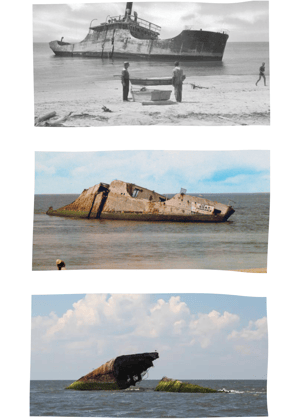
President Woodrow Wilson approved the construction of 24 ships to the tune of $50 million (that would be $11.4 billion today) to help build up American shipping capacity. While concrete was cheap and readily available, it made expensive, hard-to-operate ships. And thick hulls meant less room for cargo.
Only 12 were ever built and were not completed until after WWI. Most were shattered, repurposed for oil, or sunk to be used as breakwaters.
One example is the USS Atlantis, a 260-foot-long cargo ship powered by steam engine. When completed in 1918, she could travel up to 10.5 knots, or 12 miles an hour, which was about one-third of the speed of the destroyers and half that of steams cargo ships of the day. She was retired and sold as a ferry landing ship but broke free during a storm and ended up grounded in Cape May, New Jersey. Comparing the old photos from 1926 to the shipwreck as it looks today, you can see how quickly and completely the ocean water erodes concrete.
Timber ships and tax evasion
In the 19th century, European law made shipbuilding wood tax-free based on the argument that the wood was not cargo but part of the ship. This left a unique loophole in the shipping trade.
The Baron of Renfrew was one of the largest wooden ships ever built. And it was disposable. With a total internal volume of 5,295 gross register tonnage (GRT), this four-masted barque was built for a one-way voyage to England. The intention was that she would sail from the New World to Europe and then be disassembled and sold as tax-free ship-timber after discharging the heavily import-taxed timber cargo. The single-use ship may have been an ingenious nautical ploy on paper, but it was doomed to failure. She never completed a single voyage before breaking up in the English Channel with her 9000 tons of timber lost. Soon after, a change in the timber tax census caused disposable or timber ships to lose value and application. No more were built.
Recycled ships
Assuming you have a good, working-order front half of one ship and the back half of another, why not combine them into a new, recycled ship?
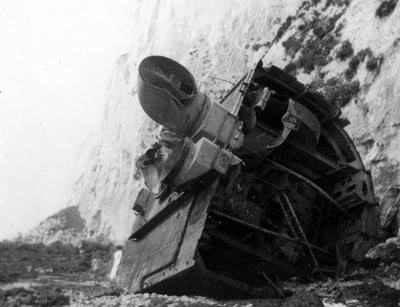
The HMS Zubian destroyer was a Frankenstein combination of two Tribal-class destroyers, the HMS Zulu and the HMS Nubian (stern pictured right), both of which sustained heavy damage while serving the Royal Navy during the First World War.
The British put these ship halves together and built the Zubian, which, much as the name sounds, was the Zulu's bow and the Nubian's stern.
This refurb ship had a noble career after she was recommissioned in 1917, including chasing down and successfully sinking a German U-boat by dropping a depth charge over its position. After the war, the Admiralty unfortunately did away with this remarkable ship and instigated new destroyer designs incorporating the lessons learned from the first modern naval war.
Frozen ships
When you mix wood pulp and water and then freeze it, you get pykrete, which is as strong as concrete. While pykrete has a relatively slow melting rate due to its low thermal conductivity as well as vastly improved strength and toughness compared to ice, it is difficult to form and only works as long as – you guessed it – it remains frozen. If it’s not kept below 5ºF (-15º Celsius), it sags under its own weight.
Nonetheless, during WWII Project Habakkuk endeavored to build an enormous aircraft carrier, more akin to a floating island than a ship in the traditional sense. The goal was to deploy the carrier against German U-boats in the mid-Atlantic as these were out of flight range of land-based planes.
Lord Mountbatten (who worked with Geoffrey Pyke, the inventor who gave his namesake to pykrete) was sent to see the Prime Minister about the matter but was told Churchill was in his bath. Legend has it (okay, it was a dinner speech) that Mountbatten said, “'Good, that's exactly where I want him to be.’ I nipped up the stairs and called out to him, 'I have a block of a new material which I would like to put in your bath.” The history books describe the demonstration as most dramatic. After the outer film of ice on the small pykrete cube had melted into Churchill’s steaming bath, the freshly exposed wood pulp kept the remainder of the block from thawing.
Although a promising scale test of a prototype measuring 60 by 30 feet and weighing 1000 tons was developed on Patricia Lake in Alberta, Canada, the 1HP engine was not enough to keep it frozen. Melting was only one of the many problems, as were the rising costs due to necessary steel reinforcement and a more effective skin around the vessel’s hull. The project was projected to cost £2.5 million, and the vessel would not be ready in 1944. The project was shelved.
Today as in the past, engineers are a creative and naturally curious bunch, and thus new ship designs are a permanent aspect of maritime trade.
Smarter ships of the future
This century’s challenge is our need for even more deeply interlinked global trade amidst battling climate change and its impact on weather patterns, sea levels and trade routes. The answer may be more high-tech than you think.
Here's a fact: Just 15 of the largest vessels produce the same amount of sulfur emissions as all the planet’s cars put together. These clunky, gas-guzzling giants have a legacy design ready for change.
What if we could find a way to reduce costs and improve efficiency by running ships via remote control? Finnish energy and technology firm Wärtsilä tested just that over five years ago with the idea to remove human crews from vessels to decrease costs, as well as to reduce fuel consumption and lower emissions by improving the movement of vessels. Imagine an engineer sitting in a control room in San Diego controlling a massive cargo ship off the coast of Scotland. What about remote-controlled tugs to support vessels in the harbor?
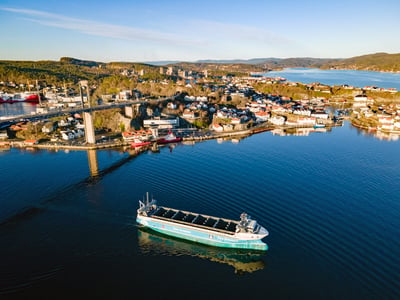 Another explored angle is fully electric ships, such as the zero-emission YARA Brikeland. With its 120 TEU capacity, this Norwegian ship will transport fertilizer across the fjord from Yara’s Porsgrunn plant to Brevik port, thereby replacing 40,000 diesel truckloads per year and eliminating associated carbon emissions.
Another explored angle is fully electric ships, such as the zero-emission YARA Brikeland. With its 120 TEU capacity, this Norwegian ship will transport fertilizer across the fjord from Yara’s Porsgrunn plant to Brevik port, thereby replacing 40,000 diesel truckloads per year and eliminating associated carbon emissions.
What about powering a vessel with the sun? Eco Marine Power, based in Japan, is working on rigid sails featuring solar panels that can be fitted to cargo ships. Though this will not eliminate the need for an engine or traditional fuel source, solar could be used to reduce fossil fuel consumption.
Always searching for new shipbuilding materials, engineers are looking at composites such as glass fiber and plastics. However, the issue with cargo ships is that most of their weight comes from the cargo, not the ship design. So, while this may make an impact in, say, passenger cruise liners, there is not much motivation to explore lightweight materials for cargo ships.
And one last thought before we sign off: techniques like 3D printing change how ship components are produced and are revolutionizing the maritime supply chain. In 2020, the bulk carrier Berge Mafadi was one of the world’s first ships to receive a commercial delivery of 3D-printed spare parts.
Cargo today
 Some 11 billion tons of goods are transported by ship each year. Ships large and small (mostly large) battle for space at congested ports rushing to upgrade facilities or dredge out even deeper harbors to facilitate more and bigger ships. Carriers wait pseudo-patiently for the goods to be released so they can load them on trucks and get them on their way to delivery.
Some 11 billion tons of goods are transported by ship each year. Ships large and small (mostly large) battle for space at congested ports rushing to upgrade facilities or dredge out even deeper harbors to facilitate more and bigger ships. Carriers wait pseudo-patiently for the goods to be released so they can load them on trucks and get them on their way to delivery.
The constraints placed on ocean shipping are not changing any time soon, but IL2000 is here to help expedite your international shipping by providing alternative solutions. While new shipbuilding designs are being explored, we can review different port pairings, transloading and drayage, and airfreight options to help find the best and most cost-efficient transit.
Contact us for a no-obligation analysis.

